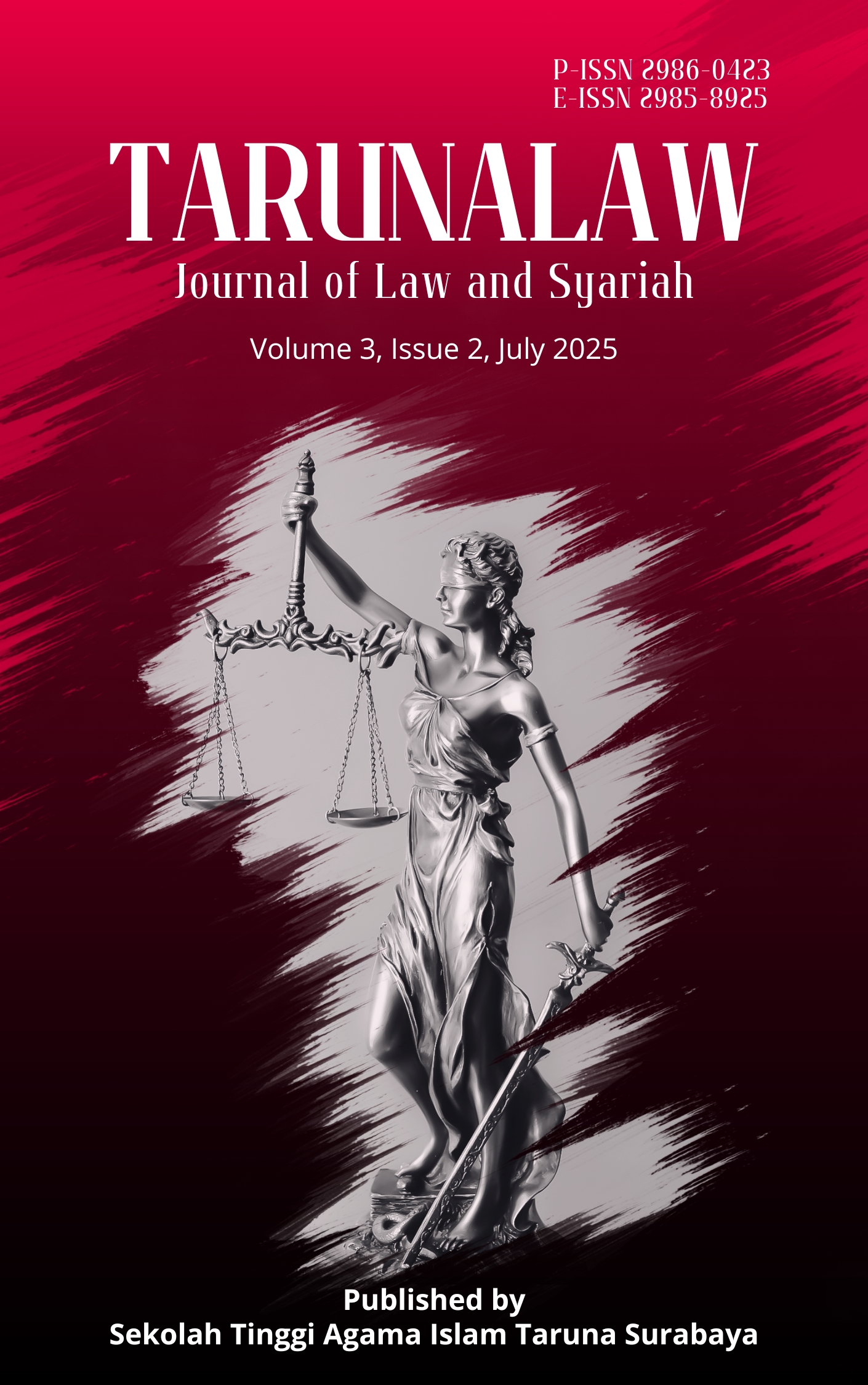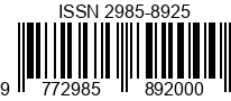KENDALA TERJADINYA PERMASALAHAN DALAM IMPLEMENTASI UNDANG-UNDANG PERLINDUNGAN ANAK
DOI:
https://doi.org/10.54298/tarunalaw.v3i02.496Keywords:
Child Protection Act (UUPA), Implementation Constraints, Implementation of LawAbstract
The implementation of the Child Protection Law (UUPA) in Indonesia faces a number of significant obstacles that hinder the achievement of the goal of protecting children's rights effectively. This study evaluates the main challenges that arise in the implementation of the UUPA. These obstacles include limitations in institutional resources and capacity (limited budget, lack of competent workers, and inadequate infrastructure); lack of coordination and synergy between institutions (overlapping authorities, weak referral mechanisms, and unintegrated data); variations in understanding and enforcement of the law (lack of understanding among officials and the community, and inconsistent enforcement); the existence of social stigma, patriarchal culture, and challenges in the digital world; and children's participation that has not reached optimal levels. This article concludes that the complexity of the issue requires comprehensive cooperation from all parties involved, including increasing the budget, strengthening capacity, adjusting institutions, disseminating broad laws, and adapting to new methods of crime. By addressing these challenges, it is hoped that the UUPA can operate more effectively in creating a safe environment and supporting the growth and development of children in Indonesia.
References
Adinda Pasya Pangestika (2022), Santi Esterlita Purnamasari, and Aditya Putra Kurniawan, “Hubungan Antara Persepsi Budaya Patriarki Dengan Perilaku Kekerasan Seksual Terhadap Perempuan Pada Laki-Laki Dewasa Awal,” PSIKOSAINS (Jurnal Penelitian dan Pemikiran Psikologi), 16, no. 2.
Amaliah Uyun Ayunda (2025), “Pemenuhan Hak Pendidikan Anak menurut UU No. 35 Tahun 2014 Tentang Perlindungan Anak,” Journal of law, 8(1).
Fatimah (2021), “Implementasi Budaya Religius dalam Membina Akhlak Siswa di MI Rahmatullah Kota Jambi,” Jurnal Pendidikan Guru, Vol. 2, No. 1.
Lhatifah Berliani and others (2023), ‘Perlindungan Hukum Terhadap Anak Korban Tindakan Kekerasan Di Sekolah’, Jurnal Hukum Das Sollen, 9.2.
Pryanka Ceza Oktrian et al. (2024), “Perlindungan Hukum Bagi Korban Kekerasan Seksual Terhadap Anak-Anak Di Bawah Umur Dalam Lingkungan Keluarga,” Mandub : Jurnal Politik, Sosial, Hukum dan Humaniora2, no. 3.
Raja Indriani Fajrianti (2022), “Collaborative Governance Dalam Perlindungan Anak Di Kota Batam Tahun 2020,” Jurnal Ilmu Administrasi Publik, Vol. 8, No. 1.
Separen Separen (2023), “Bentuk Pelindungan Terhadap Korban, Pendamping Korban, Dan Saksi Kekerasan Seksual Di Lingkungan Perguruan Tinggi,” PETITA5, no. 1, https://doi.org/10.33373/pta.v5i1.5525
Yelse Maya Wulandari (2024), “Pengaruh Penerapan Undang-Undang Perlindungan Anak Terhadap Penurunan Kasus Kekerasan Pada Anak di Indonesia,” Verdict: Journal of Law Science, 2(2).
Downloads
Published
How to Cite
Issue
Section
License
Copyright (c) 2025 Alya Ariyanti, Hunainah

This work is licensed under a Creative Commons Attribution-ShareAlike 4.0 International License.
Authors who publish with this journal agree to the following terms:
- Authors retain copyright and grant the journal right of first publication with the work simultaneously licensed under a Creative Commons Attribution-ShareAlike that allows others to share the work with an acknowledgement of the work's authorship and initial publication in this journal.
- Authors are able to enter into separate, additional contractual arrangements for the non-exclusive distribution of the journal's published version of the work (e.g., post it to an institutional repository or publish it in a book), with an acknowledgement of its initial publication in this journal.
- Authors are permitted and encouraged to post their work online (e.g., in institutional repositories or on their website) prior to and during the submission process, as it can lead to productive exchanges, as well as earlier and greater citation of published work (See The Effect of Open Access).














